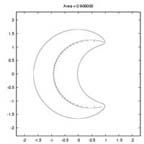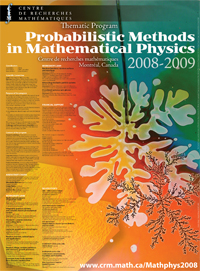The mathematics that has been developed for Random Matrix Theory in the past two decades is astonishingly rich and includes variational techniques, inverse spectral approach to nonlinear integrable differential and difference systems, new asymptotic techniques, such as the nonlinear steepest descent method, free probability and large deviations methods. The results obtained have found new applications in a stunningly wide range of areas of both mathematics and theoretical physics such as, for example, approximation theory, orthogonal polynomials and their asymptotics, number theory, combinatorics, dynamical systems of integrable type, representation theory of finite and infinite groups, growth phenomena, quantum gravity, conformal field theory, supersymmetric Yang-Mills theory and string theory.
This workshop will focus on recent advances in the asymptotic spectral theory of random matrices, connections with (multi-)orthogonal polynomials, combinatorics and moduli space theory of Riemann surfaces, algebraic geometry, theory of isomonodromic deformations, number theory and Dyson processes.
Scientific Organizers
- E. Basor (Cal Poly)
- M. Bertola (Concordia)
- B. Eynard (CEA centre d'études de Saclay)
- A. Its (IUPUI)
- K. McLaughlin (Arizona)

The zeroes (crosses) of the orthogonal polynomials - up to degree 54 - in the plane for a measure with a repulsive charge at z=1. The bean-shaped region is the support of the asymptotic equilibrium distribution and the line extending between the two apices is the skeleton (mother-body) of the domain. The gro wth of this region follows the Laplacian-growth evolution, the area increasing linearly in time.

